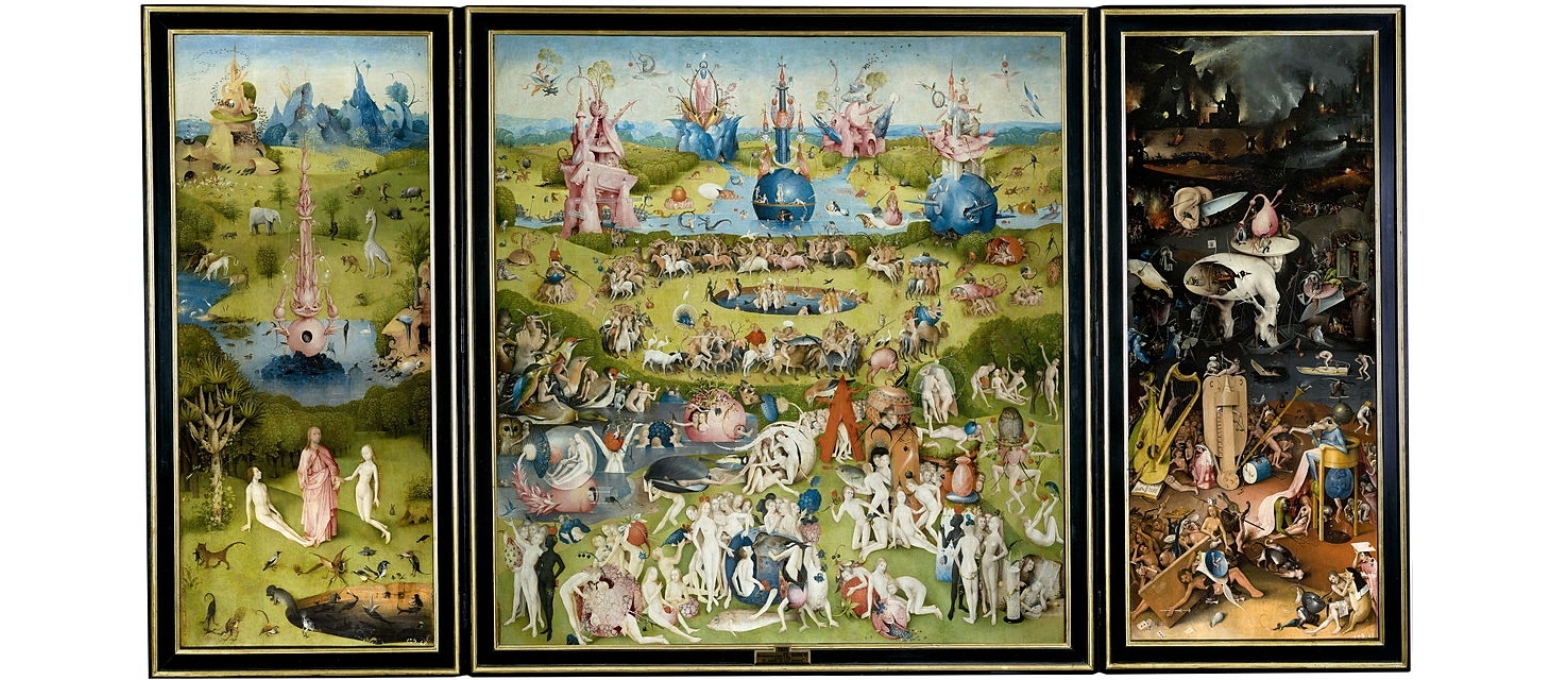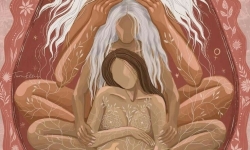Hello everyone again! In today’s blog we will continue our tour in the Prado Museum. This time, we're walking through the Hieronymus Bosch room. In the middle is the famous triptych, The Garden of Earthly Delights. This work was one of my favorites from the museum, and one of the most stroking for me. It's a famous Renaissance painting created around 1490-1510, full of color, mystery, and symbolism… What a contrast with the somber Black Paintings by Goya..!
As I mentioned before, it’s a triptych, so it’s made of three different panels that represent different scenes and themes. The traditional interpretation is that the narrower side panels represent Heaven (or paradise) and Hell, and the wider central one, Earth. Of course they are Christian representations of Heaven and Hell, and let’s not forget that the attributes of such places, or concepts, are not universally shared. Nevertheless, everyone agrees that Hell is a place or state of punishment and Heaven of reward. Between reward and punishment, Hieronymus Bosch places Earth, a chaotic place where humans often behave badly.
The left panel represents the Garden of Eden, where God creates Adam and Eve. It’s a beautiful garden, full of pleasant animals and plants. Everything is harmonious and you can feel calm. Probably Bosch believed that Heaven looks like the Paradise described in Genesis.
The central panel shows an idyllic but also chaotic scene of earthly pleasures and excess. A lot of people engage in sensual activities among themselves, but also interacting with plants and animals. Many of the scenes are sinful. The general idea is that hedonism and the pursuit of pleasures can lead to corruption.
This corruption leads to the right panel, where sinners are punished in terrible ways, for their indulgence in earthly pleasures. There is darkness, physical suffering, death…
Although the painting is one of the oldest in the museum, it looks surprisingly modern. It could have been painted by a surrealist artist of the XX.





